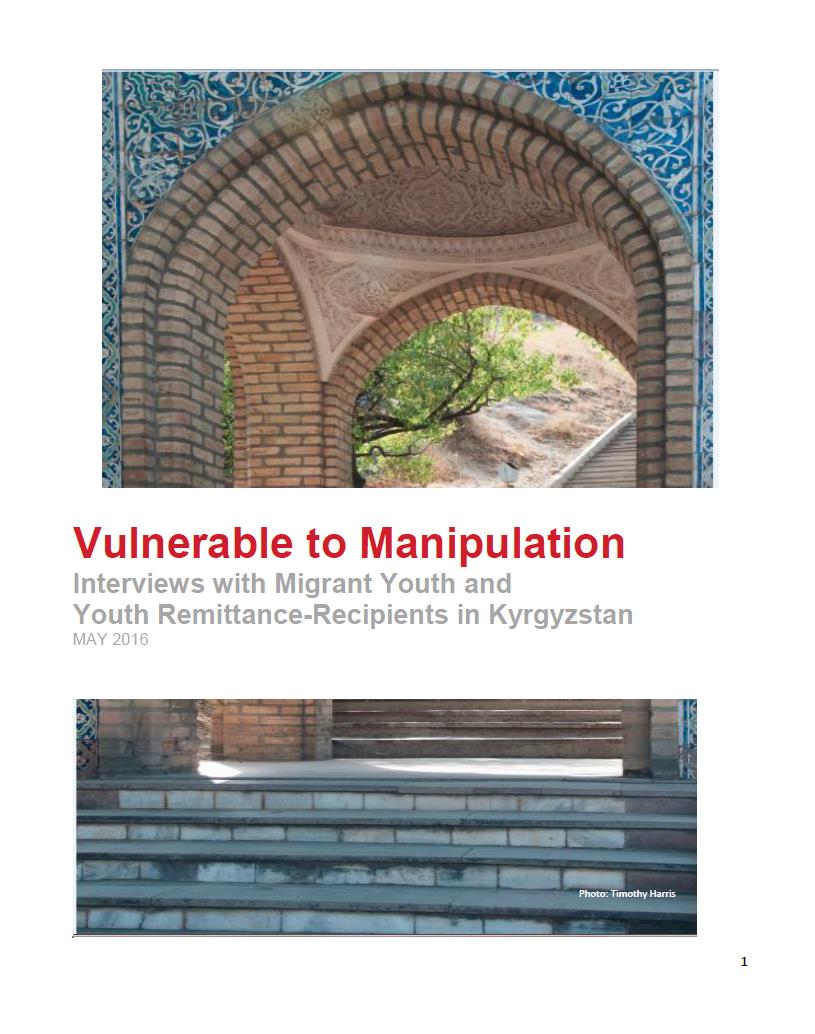Research conducted by Mercy Corps and Foundation for Tolerance International (FTI) in Kyrgyzstan reveals a number of risk factors related to violence that exist within the studied youth population of southern Kyrgyzstan. This research was conducted between March and May 2016 in the southern provinces of Osh, Jalalabad, Batken, and in the northern province of Issyk-Kul. In 2010, southern Kyrgyzstan saw an outbreak of violence between ethnic Kyrgyz and ethnic Uzbek citizens. Known locally as the Osh Events, this violence resulted in mass casualties, displacement and destruction of physical infrastructure in the South. In addition, southern Kyrgyzstan is a known origin of people migrating to Syria to join Jabhat al-Nusra or the so-called Islamic State, with official figures citing fewer than 500 people from Kyrgyzstan.1 While this research did not specifically seek out people who migrated to join the fight in the Middle East, some respondents were directly aware of neighbors, friends, acquaintances or people from their communities who had gone. Issyk-Kul was selected as a comparator province for this study due to its multi-ethnic composition and lack of conflict history.
Kyrgyzstan is characterized by a young, rapidly expanding population, high levels of rural poverty, insufficient domestic jobs for working-age people, and a high dependence on Russia as a source of remittances. The precipitous reduction in remittances from Russia due to contractions in the Russian economy in the last two years and changes in the ruble/som exchange rate have spurred questions about the population’s vulnerability to destabilization or recruitment to jihadi organizations.
Researchers interviewed 159 people in these four provinces of Kyrgyzstan, including migrant youth, remittance-receiving youth, and key informants drawn from the communities. Perceptions, regardless of accuracy, create a reality for the people who hold those views. This paper does not seek to comment on the truth or falsehood of those perceptions. Rather, this research hopes to shed light on the consistency of themes of note. Vulnerabilities to manipulation appear to exist in the three southern provinces studied—Osh, Jalalabad, and Batken—as well as Issyk-Kul in the North. However, the frequency and texture of interview responses supports the view that there is enhanced risk among youth populations from the southern provinces. Additionally, the extent of combined factors would seem to indicate that while there are some differing risk factors confronting ethnic minorities and the ethnic majority in the South, both warrant attention.








Comment
Make a general inquiry or suggest an improvement.